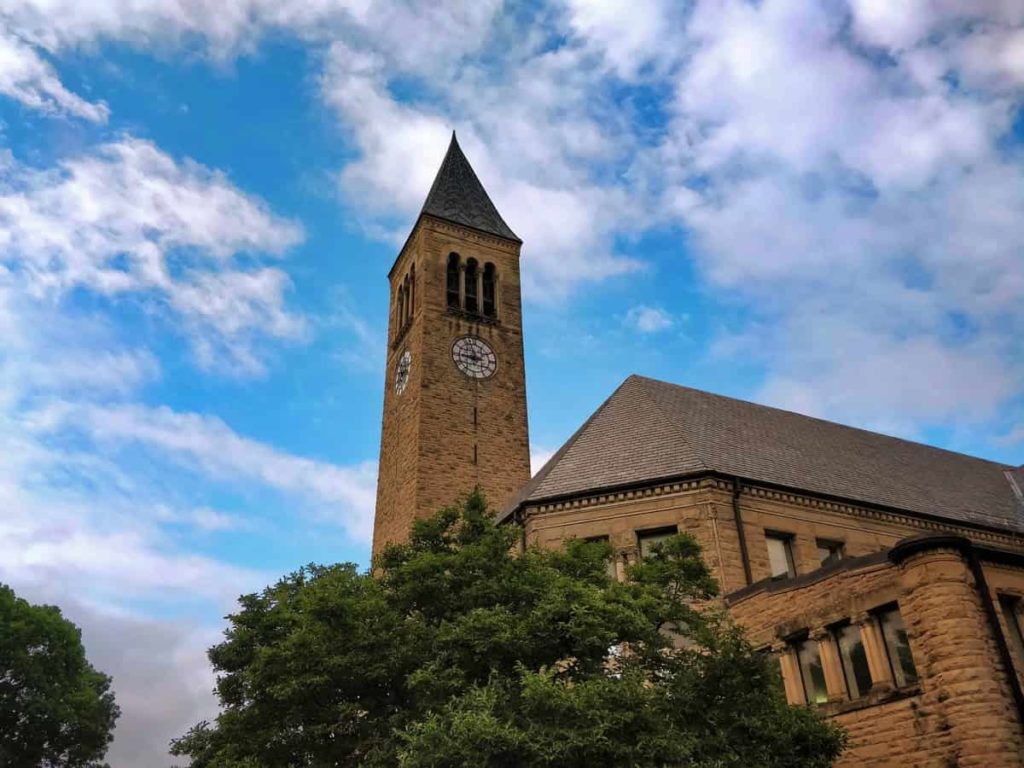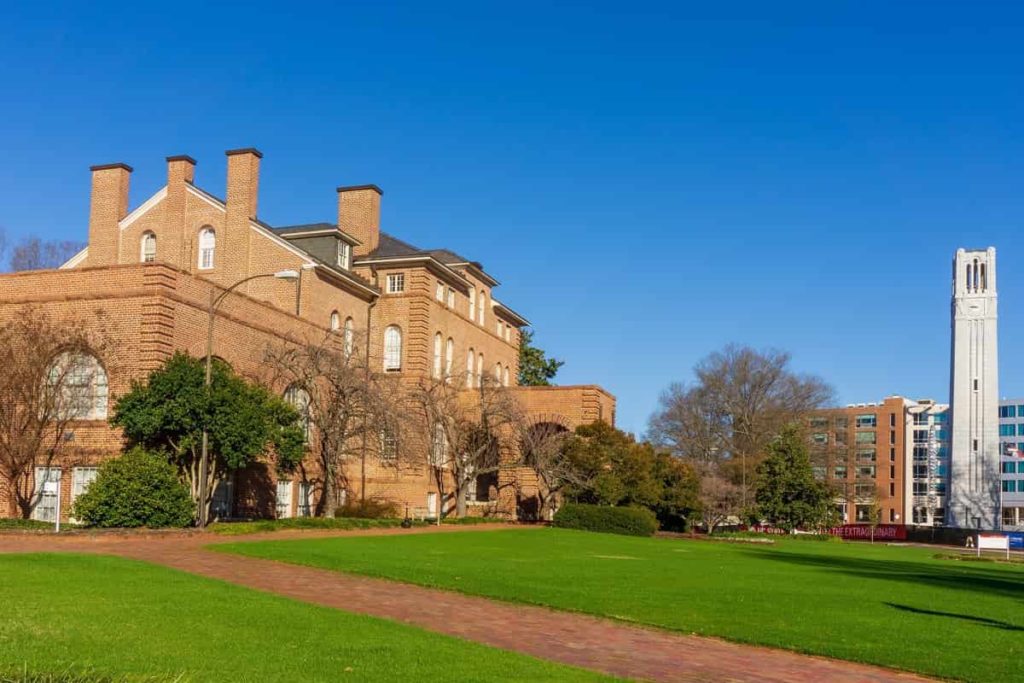Farming has been a part of human culture from the dawn of time. It’s an important aspect of living a healthy lifestyle and maintaining a healthy economy. According to studies, universities aren’t keeping up with the demand for graduates who are ready to fill these open positions. Many institutions began as agricultural colleges, so there are a plethora of excellent options to pick from. If you assume agricultural occupations are limited to crops and animals, you’ll be amazed at how many options are available. Let’s check out the top 10 Agriculture Universities in the USA.
There are more than 40 major institutions in the United States that offer diverse agricultural programs, making it an ideal option. From conventional agronomy and animal sciences to advanced technologies like biotechnology, top-tier colleges offer a wide spectrum of agricultural subjects. There are a lot of globally renowned colleges in the United States that offer agricultural programs, and the field of study is vast in terms of curriculum, thus there are many specialties to choose from when studying agriculture at a university in the United States.
Top 10 Agriculture Universities in the USA
Cornell University, New York
Cornell Institution is a prestigious private university in Ithaca, New York. It is a huge university, with 15,038 undergraduate students enrolled. Cornell’s acceptance rate is 11%, making admissions exceedingly competitive. Agriculture biology, Computer Science, and Tourism Management are also popular majors. Cornell graduates earn a starting salary of $64,800 after graduating 95% of students.
In case you miss this: Top 11 B.Sc. Agriculture Colleges in India

The Agricultural Sciences curriculum is divided into two sections, with a minimum of 16 courses in each. With 12 basic courses, students obtain a broad understanding. Sustainable agriculture, integrated pest management, genetics, soil, plant, animal, and food science, business management, and international agriculture are some of the subjects that might be studied.
Students acquire depth by selecting one of five focuses, each of which requires at least four courses or 12 credits. Students get practical experience through an internship equivalent to at least six weeks of full-time employment before their final semester. Students are taught to think critically in the biological and social sciences thanks to this system.
Texas A&M University, Texas
Texas A&M University offers more than 100 agriculture-related programs. It has several learning facilities, including the Rosenthal Meat Science and Technology Center, the Leach Teaching Gardens, and the Center for Coffee Research, all of which enrich the learning experiences of its students. Agriculture courses such as biochemistry, biophysics, poultry science, and tourism sciences are components of Texas A&M University’s AgriLife program.
Since its foundation in 1876 as the Agricultural and Mechanical College of Texas, Texas A&M University has had a strong focus on agriculture and the biological sciences. Better nutrition and agriculture are a result of the students we teach and the scientific breakthroughs we find. The College of Agriculture and Life Sciences is internationally acknowledged as a leader in dozens of academic fields, from long-established majors like agronomy and animal science to newer programs like forensics and spatial sciences.
Iowa State University, Iowa
Iowa State Institution is a well-regarded public university in Ames, Iowa. It is a huge university, with 26,713 undergraduate students enrolled. Iowa State has a 92 percent admission rate. Iowa State graduates receive a starting income of $41,200, with 74 percent of students graduating. According to the 2020 QS World University Rankings, Iowa State University’s agricultural programs are in the top 4% of all agriculture and forestry universities worldwide.
In case you miss this: Top Vermicompost Companies in India: List and Best

Students at the College of Agriculture and Life Sciences receive a well-rounded education that encompasses communications, biology, physics, and social sciences, as well as humanities and technical subjects. Due to the well-balanced education they acquired, graduates of the College are equipped for a variety of employment prospects.
Various courses include Agribusiness and industry, biological and environmental sciences, natural resource management, value-added processing, rural development, education, animal and human health professions, public agencies are all options for graduates of the College of Agriculture and Life Sciences.
University of California, Davis
UC Davis is a well-regarded public institution in the Sacramento Area, situated at the University of California-Davis. It is a huge university, with 30,171 undergraduate students enrolled. The acceptance rate at UC Davis is 39 percent, making admissions very competitive. Research and Experimental Psychology, Economics, and Neuroscience & Neurobiology are also popular majors. UC Davis graduates receive a starting income of $40,400, with 87 percent of students graduating.
In case you miss this: Top Hydroponics Companies in India

The College of Agricultural and Environmental Sciences of the University of California, Davis, was founded in 1922 and is among the four colleges on the university campus of California, Davis. It has twenty-seven undergrad majors and thirty-three graduate groups to choose from. The following courses are part of the Agricultural Sciences Division: Entomology, Nematology, Plant Pathology, Animal Science, Biological and Agricultural Engineering, Plant sciences, agronomy, and range science, vegetable crops, viticulture, and enology.
University of Georgia, Athens
The University of Georgia is located in Athens, Georgia. Its research is done on the government grant land. It is one of the United States’ oldest public colleges. It is the University System of Georgia’s flagship institution. Over the last two decades, the University of Georgia has been one of the top three producers of Rhodes Scholars among public colleges.
In case you miss this: Top Fertilizer Companies in India

The University of Georgia is made up of 18 schools and colleges. The College of Agricultural and Environmental Sciences is one of them. Students can readily connect with lecturers in small upper-level classrooms. Plants, animals, business, communication, education, food science, and the environment are all options for students. The college is dedicated to ensuring a safe food supply, a healthy environment, and a better living for all. On the UGA campuses in Athens, Griffin, and Tifton, CAES contains classrooms, labs, and facilities.
University of Florida, Florida
The Southern Association of Colleges and Schools has granted university accreditation (SACS). With 57,841 students enrolled for the 2020–21 academic year, it is the third biggest university in Florida by student population and the sixth largest single-campus institution in the United States. There are 16 colleges and also more than 150 research centers and institutes at the University of Florida. It provides a variety of graduate professional programs.
Agriculture sciences, forest and geospatial sciences, natural resources, life sciences, social sciences, and pre-professional studies are all available as undergraduate majors or minors at the College of Agricultural and Life Sciences.
North Carolina State University, Raleigh
The 12 departments that make up NC State’s College of Agriculture and Life Sciences contribute to the university’s long-term viability as a land-grant mission institution. The CALS strives to equip its students for global success. Molecular and Structural Biochemistry, Agricultural and Human Sciences, and many more agricultural programs are available. Because of its great curricula and easy online programs, NC State was named to the list of Thirty Best Value Agriculture Colleges.
The college’s academic offerings uniquely combine agricultural and biological sciences. The College of Agriculture and Life Sciences (CALS) provides specialized majors in agriculture and life sciences to prepare students for rewarding employment in industry, academia, government, or nonprofit organizations, as well as graduate and professional programs. CALS’ educational programs aim to provide students with a relevant, scientific, and practical understanding of the food, agricultural, and life sciences.
In case you miss this: Top 11 Cold Storage Companies in India

Students can reach their full personal and professional potential with the help of highly skilled and talented professors. The development of interdisciplinary problem-solving abilities is central to the college’s mission, and its alumni will benefit from these talents as they pursue a lifetime of study and professional experiences.
University of Winconsin – Madison, Madison
The University of Wisconsin–Madison is the state’s official university and the system’s flagship campus. It was Wisconsin’s first public university, and it is now the state’s oldest and biggest public institution. The University of Wisconsin–Madison is divided into 20 schools and colleges, with 30,361 undergraduate and 14,052 graduate students enrolled in 2018. There are 136 undergraduate majors, 148 master’s degree programs, and 120 doctorate programs available. With nearly 21,600 academics and employees, the institution is the largest employer in Wisconsin, contributing significantly to the state’s economy.
The College of Agricultural and Life Sciences (CALS) is a division of the University of Wisconsin–Madison, which is Wisconsin’s flagship and land grant university. CALS offers educational and research opportunities in a variety of subjects, from physical and biological sciences to social sciences. CALS is well-positioned to explore multidisciplinary answers for today’s major issues, with experts working across the range of agriculture and biological sciences. To address developing difficulties in areas where we have the opportunity to have a substantial effect, the university collaborates with communities, industry, other institutions, government agencies, and nonprofit organizations.
Oklahoma State University, Oklahoma
Oklahoma State Institution–Stillwater is a public land-grant research university located in Stillwater, Oklahoma. Under the Morrill Act, OSU was established in 1890. It was formerly known as Oklahoma Agricultural and Mechanical College, and it is the main institution of the Oklahoma State University System, with over 35,000 students over five campuses and a $1.5 billion yearly budget.
The Master of International Agriculture Degree Program is an interdisciplinary degree program that prepares students for a career in global agriculture. The curriculum equips students to make a substantial contribution to the field of international agriculture by combining theoretical, practical knowledge, and hands-on experience.
In case you miss this: Top 20 Seed Companies in India

Kansas State University, Kansas
Kansas State Institution is a well-acknowledged state university in Manhattan, Kansas. It is a huge university, with 15,548 undergraduate students enrolled. Kansas State University has a 95% acceptance rate. Animal Sciences & Husbandry, Business, and Marketing are also popular degrees. Kansas State graduates receive a starting income of $38,400 after graduating 65 percent of students.
The College of Agriculture provides 13 bachelor’s degree programs, ten master’s degree programs, nine Ph.D. degrees, and a pre-veterinary medicine program. Students entering a variety of occupations in the food chain and allied agribusinesses can benefit from the programs and alternatives available.
The College of Agriculture’s instructional faculty has a Ph.D. degree over 95%. All of them are actively interested in research and publish their findings in scholarly publications regularly. They collaborate with extension professionals regularly. This combination of teaching, research, and outreach help to keep courses current and relevant.
Disclaimer: The above analysis is purely theoretical and only assumed (not proved) to provide great results when practiced. We are not responsible for any errors that arise on this website or from any decision or action taken as a result of using this site.
- How to Make Houseplants Bushy: Effective Tips and Ideas
- Innovative Strategies for Boosting Coconut Pollination and Yield
- Pollination Strategies for Maximum Pumpkin Yield
- The Complete Guide to Chicken Fattening: Strategies for Maximum Growth
- Natural Solutions for Tulip Problems: 100% Effective Remedies for Leaf and Bulb-Related Issues
- Revolutionizing Citrus Preservation: Towards a Healthier, Greener Future
- Natural Solutions for Peony Leaf and Flower Problems: 100% Effective Remedies
- Maximizing Profits with Avocado Contract Farming in India: A Comprehensive Guide
- Natural Solutions for Hydrangea Problems: 100% Effective Remedies for Leaf and Flowers
- The Ultimate Guide to Choosing the Perfect Foliage Friend: Bringing Life Indoors
- From Sunlight to Sustainability: 15 Ways to Use Solar Technology in Agriculture
- The Ultimate Guide to Dong Tao Chicken: Exploring from History to Raising
- The Eco-Friendly Makeover: How to Convert Your Unused Swimming Pool into a Fish Pond
- Mastering the Art of Delaware Chicken Farming: Essentials for Healthy Backyard Flocks
- 20 Best Homemade Fertilizers for Money Plant: DIY Recipes and Application Methods
- How to Craft a Comprehensive Free-Range Chicken Farming Business Plan
- Brighten Your Flock: Raising Easter Egger Chickens for Beauty and Bounty
- How to Optimize Your Poultry Egg Farm Business Plan with These Strategies
- Subsidy for Spirulina Cultivation: How Indian Government Schemes Encouraging Spirulina Farmers
- Ultimate Guide to Raising Dominique Chickens: Breeding, Feeding, Egg-Production, and Care
- Mastering the Art of Raising Jersey Giant Chickens: Care, Feeding, and More
- Ultimate Guide to Raising Legbar Chickens: Breeding, Farming Practices, Diet, Egg-Production
- How to Raise Welsummer Chickens: A Comprehensive Guide for Beginners
- How to Protect Indoor Plants in Winter: A Comprehensive Guide
- Ultimate Guide to Grow Bag Gardening: Tips, Tricks, and Planting Ideas for Urban Gardeners
- Guide to Lotus Cultivation: How to Propagate, Plant, Grow, Care, Cost, and Profit
- Agriculture Drone Subsidy Scheme: Government Kisan Subsidy, License, and How to Apply Online
- Ultimate Guide to Raising Araucana Chickens: Breed Profile, Farming Economics, Diet, and Care
- Bringing Hydroponics to Classroom: Importance, Benefits of Learning for School Students
- Ultimate Guide to Raising Polish Chickens: Breed Profile, Farming Economics, Diet, and Care
- Ultimate Guide to Raising Australorp Chickens: Profile, Farming Economics, Egg Production, Diet, and Care
- Silkie Chicken Farming: Raising Practices, Varieties, Egg Production, Diet, and Care
- Sussex Chicken Farming: Raising Practices, Varieties, Egg Production, Diet and Care
- Homemade Feed Formulations for Livestock: Discover Cost-effective Starter to Finisher Feed Recipes
- 20 Best Pig Weight Gain Supplements: Top Swine Weight Gain Formulas
- Ultimate Guide to Elderberry Farming: Propagation, Planting, Yield, Cost, and Profit